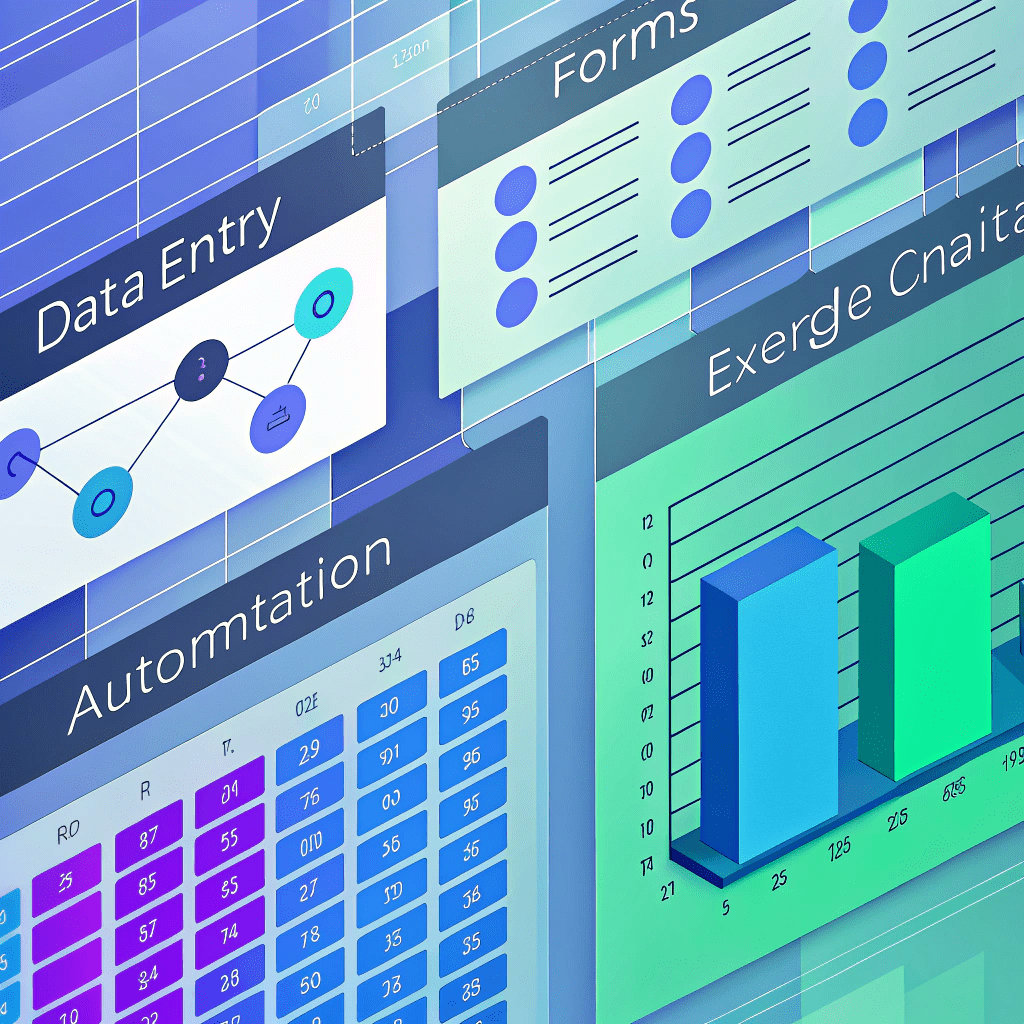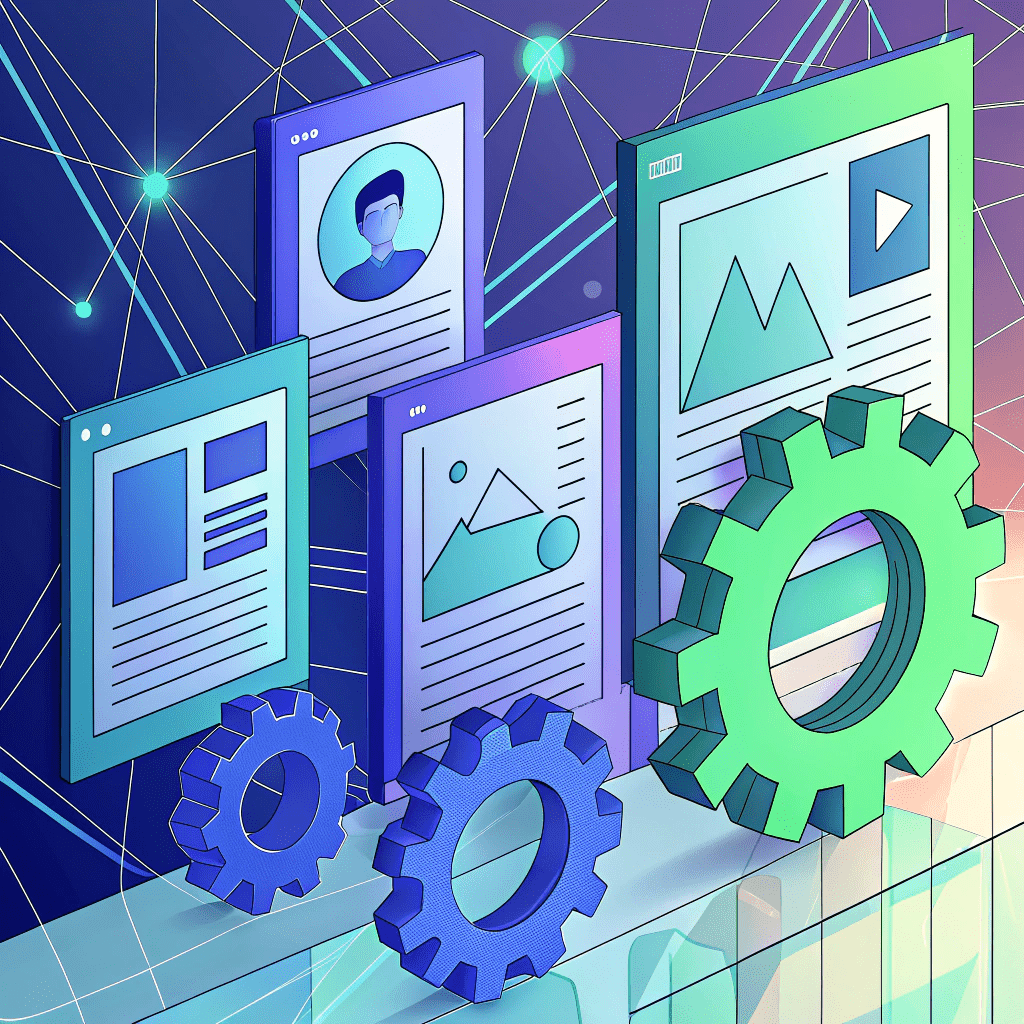Unlocking AI Potential for Startups
Top AI Tricks and Tips for Australian Startups to Boost Efficiency
Discover how AI can transform your startup’s productivity and streamline operations for unprecedented growth.
Introduction to AI for Startups
Harnessing AI for Startup Success
In the fast-paced world of Australian startups, time and resources are precious commodities. You’re always looking for ways to do more with less and stay ahead of the curve. Artificial Intelligence (AI) isn’t just a tool for large corporations; it offers a wealth of practical tricks and tips that can significantly boost efficiency for startups, freeing you up to focus on innovation and growth.
Building on our previous discussion about leveraging AI to streamline processes and reduce overheads, this guide dives into specific, actionable ways Australian startups can start using AI today to work smarter and more efficiently. According to Business.gov.au, AI has the potential to significantly change the way businesses operate. Resources like the University of Technology Sydney (UTS) also highlight that AI is exceeding the expectations of Australian SMEs, although adoption barriers exist.
The Efficiency Advantage
Why Efficiency is a Game-Changer for Australian Startups
For startups, efficiency directly impacts:
- Productivity: Getting more done in less time. Resources like DreamHost discuss ways to use AI to boost productivity, noting AI can automate simple admin, enhance customer support, and assist with creative tasks.
- Cost Savings: Reducing the need for extensive manual labor.
- Agility: Quickly adapting to changes and opportunities.
- Focus: Allocating human talent to strategic, high-value tasks.
AI provides practical solutions to unlock these benefits.
Enhance Your Startup with AI
Top AI Tricks and Tips for Boosting Startup Efficiency
Here are some actionable ways you can start using AI in your Australian startup. Many of these tips involve exploring readily available AI tools for business efficiency, as listed by sources like Retainr.
Automate Content Creation & Optimization
- Use AI writing tools (like ChatGPT, Jasper, or Copy.ai) to generate first drafts of blog posts, social media captions, email subject lines, or website copy. You can find guides on using AI for content creation from sources like Magai.
- Employ AI tools to optimize your content for readability and engagement.
Tip: Always review and edit AI-generated content to ensure it aligns with your brand voice and accuracy, as highlighted by business.gov.au.
Master Email Management
- Utilize AI features in email clients (like Gmail or Outlook, enhanced by tools like Microsoft 365 Copilot as discussed by nBold) to prioritize important messages, summarize long threads, or suggest quick replies.
- Use AI to draft standard email responses or outreach messages. Guides like those from Buffer can provide insights on AI email tools.
Simplify Research and Summarization
- Employ AI tools (like Perplexity, or AI features in Notion, or tools mentioned by Moveworks) to quickly research industry trends, competitor activities, or market data by summarizing long articles or reports.
- Use AI to get quick answers to specific questions without sifting through vast amounts of information.
Enhance Basic Customer Interactions
Discover how AI can revolutionize your customer service by providing personalized and efficient interactions. Implementing AI-driven chatbots and automated support systems can significantly improve response times and customer satisfaction, allowing your team to focus on complex queries and relationship building.


AI-Powered Chatbots
Integrate AI chatbots to handle routine inquiries, freeing up your team to tackle more strategic tasks. These intelligent systems can provide instant responses, guide users through processes, and even learn from interactions to improve over time.
Automated Customer Feedback
Utilize AI to automatically gather and analyze customer feedback. This approach helps you quickly identify trends and areas for improvement, ensuring your services align with customer expectations and enhance overall satisfaction.
Personalized Customer Experiences
Leverage AI to deliver tailored experiences to your customers. By analyzing data and preferences, AI can offer personalized recommendations and solutions, creating a more engaging and relevant interaction for each individual.
Streamline Scheduling and Calendar Management
- Use AI-powered scheduling assistants (like Motion or Calendly with AI features, as mentioned by ThoughtSpot or Magai) that can find mutually convenient times for meetings based on everyone’s calendar availability.
- Get AI reminders for important tasks or follow-ups.


Automated Scheduling Tools
Discover AI-powered scheduling assistants that automatically arrange meetings, send reminders, and adjust appointments based on availability.
Calendar Integration
Seamlessly sync your calendars across devices with AI solutions that ensure all your appointments are up-to-date and conflict-free.
Time Management Optimization
Leverage AI to analyze your schedule and provide insights on how to optimize your time, ensuring maximum productivity and efficiency.
Accelerate Data Entry and Organization
- Explore AI tools (like Zapier, or specific automation platforms such as those listed by Tech Hero Australia) that can extract information from documents or images and automate data entry into spreadsheets or databases. Pipedrive highlights how AI can streamline data entry for sales teams.
- Use AI to categorize and organize files or customer information.

Facilitate Brainstorming and Idea Generation
- Use AI (like ChatGPT, or other generative AI tools as discussed by business.gov.au) as a brainstorming partner to generate ideas for blog post topics, marketing campaigns, or even new product features.
- Input your challenge or topic, and let AI provide a range of suggestions to spark your creativity.
Choosing the Right AI Tools for Your Startup
With the growing number of AI tools available, selecting the right ones for your Australian startup can seem daunting. However, a strategic approach will ensure you invest in solutions that genuinely boost efficiency and provide value.
Start by exploring tools that are user-friendly and designed for small businesses or specific tasks. Many platforms offer free trials or affordable startup tiers, allowing you to test their suitability. Look for tools that integrate with your existing software where possible, as discussed in guides like The A to I of Artificial Intelligence from Ignitec. Websites like Tech Hero Australia provide lists of AI and automation tools relevant to Australia.
When evaluating potential AI tools, consider these key factors:
Identify Your Specific Needs and Objectives:
Don’t adopt AI just because it’s popular. Clearly define the business problems you want to solve or the tasks you want to automate. What specific outcomes are you hoping to achieve (e.g., faster customer responses, reduced time on content creation, better data insights)?
Evaluate Functionality and Features:
Does the tool offer the specific AI capabilities needed for your identified tasks? Look beyond the marketing claims and explore the actual features. Can it handle the volume and type of data you have?
Consider Ease of Use and Usability:
For a startup with limited technical resources, a user-friendly interface is crucial. Will your team be able to learn and use the tool effectively without extensive training? Look for intuitive designs and good documentation, as highlighted by sources like Enate.
Assess Integration Capabilities:
Your startup likely uses existing software (CRM, project management, email marketing). Can the new AI tool seamlessly integrate with your current technology stack? Check for APIs or pre-built integrations to avoid complex and costly custom development, as discussed in guides on integrating AI tools with existing systems.
Check Scalability:
Choose tools that can grow with your business. As your data volume increases or your needs evolve, can the AI tool handle the increased load and potentially offer more advanced features? Scalability ensures your investment remains valuable in the long term.
Evaluate Cost and Potential ROI:
Look beyond the upfront price. Consider ongoing subscription fees, potential usage-based costs, and maintenance. Critically assess the potential return on investment. Will the time saved, efficiency gained, or insights provided justify the expense? Resources like Advisory Excellence emphasize evaluating cost and ROI.
Research Vendor Reputation and Support:
Choose a provider with a proven track record and good customer reviews, especially from other small businesses or startups. Reliable customer support is essential if you encounter issues.
Ensure Data Security, Privacy, and Compliance:
This is critical, especially in Australia. Understand how the AI tool handles your data. Does it comply with Australian privacy laws like the Privacy Act? Look for robust security measures, encryption, and clear data handling policies, as advised by business.gov.au and other guides on choosing AI tools. Avoid sharing sensitive information if you are unsure about a tool’s security.
Consider Industry Relevance:
Some AI tools are designed with specific industries in mind. While not always necessary, a tool tailored to your sector might offer more relevant features and insights.
By carefully evaluating these factors, you can select AI tools that are the right fit for your Australian startup’s current needs and future growth, ensuring your investment in AI translates into tangible efficiency gains.
Integrating AI into Your Workflow
Choosing the right AI tools is just the first step; successfully integrating them into your daily workflow is where the real efficiency gains happen. For Australian startups, smooth adoption by the team is crucial to seeing a return on your AI investment.
- Start with a Pilot Project: Don’t try to implement AI across your entire business at once. Choose one specific task or process to automate with AI as a pilot project. This allows you to test the tool, understand its capabilities and limitations in your specific context, and identify any initial challenges before scaling up.
- Get Your Team Onboard: AI can sometimes be perceived as a threat. Clearly communicate why you are implementing AI – to automate tedious tasks and free up their time for more creative and strategic work. Involve your team in selecting and testing tools. Provide training and support to ensure they feel comfortable and capable using the new AI tools.
- Create Simple Guidelines: Establish basic guidelines for using AI tools within your startup. This could cover when and how to use specific tools, the importance of reviewing AI-generated output for accuracy and brand voice, and best practices for data privacy when using AI. Resources like business.gov.au offer valuable guidance on using AI safely and ethically and the importance of creating processes and guidelines.
- Consider Basic Technical Integration: For some AI tools, you might need to integrate them with existing software (like your CRM, email marketing platform, or project management tool). While complex integrations might require technical help, many user-friendly AI tools offer simple integrations or rely on tools like Zapier to connect different applications and automate workflows, as highlighted by Tech Hero Australia and Ignitec.
- Foster a Culture of Experimentation: Encourage your team to explore how AI can help them in their specific roles. Share successes and lessons learned internally. The more comfortable your team is with AI, the more likely you are to uncover new opportunities for efficiency.

Measuring AI Impact
Assessing Productivity Gains
Implementing AI is an investment of time and resources. To ensure you’re achieving the desired efficiency boost and getting a positive return, it’s vital to measure the impact of your AI tools.
- Define Specific KPIs: Before implementing an AI tool, define specific Key Performance Indicators (KPIs) you will track to measure its success. These should be directly related to the efficiency you aim to gain.
- Examples of Metrics:
- Time Saved: Quantify the reduction in time spent on tasks now handled or assisted by AI (e.g., “Reduced time spent drafting social media posts by 5 hours per week”). Track this manually initially or look for tools with built-in time-tracking features.
- Increased Output: Measure the volume of work completed (e.g., “Number of blog post drafts generated per week doubled”).
- Faster Response Times: For customer support AI, track the average time to first response or resolution time for common queries.
- Reduced Errors: If AI is automating data entry or calculations, track the decrease in errors compared to manual processes.
- Resource Reallocation: Monitor how team members are reallocating the time saved by AI to higher-value activities.
- Track and Analyze Data: Use analytics tools (like Google Analytics for website-related impacts, or built-in AI tool dashboards) to track your defined KPIs. Regularly analyze this data to understand the performance of your AI implementation.
- Gather Feedback: Supplement quantitative data with qualitative feedback from your team on their experience using the AI tools and the perceived impact on their workflow.
- Continuous Monitoring and Adjustment: AI tools and your business needs will evolve. Continuously monitor the performance of your AI tools and be prepared to adjust your approach, explore new features, or consider different tools as needed. Resources like Magai discuss the importance of assessing productivity gains.
How Tr1f3cta Can Help:
Embracing AI for efficiency requires a solid digital foundation. tf3.com.au can support your startup’s technology needs:
- Australian Web Hosting: A robust, scalable, and high-performing hosting infrastructure is essential for implementing many AI tools, such as chatbots or data collection mechanisms, ensuring smooth performance and the capacity to handle data processing. Explore our Service Bundles for Various Hosting Option.
- SEO Services for Startups: Our SEO offering is your essential marketing tool for getting found online. We specialize in helping Australian startups improve their search engine visibility on https://www.google.com/search?q=Google.com.au, which is crucial for attracting customers. This includes leveraging AI in SEO for tasks like keyword research, content optimization, and gaining competitive insights. Improve your online visibility and grow your online presence with our SEO Services for Startups
Ready to unlock the power of AI to boost your startup’s efficiency and save valuable resources? We’re here to provide assistance and guidance.
Contact us today for a consultation!
Embrace the Future with AI
Conclusion: The Path Forward
Implementing AI tricks and tips doesn’t require a massive investment or technical overhaul. By identifying specific tasks, exploring user-friendly tools, and starting small, Australian startups can quickly leverage AI to automate repetitive work, gain insights faster, and significantly boost overall efficiency. Start experimenting with these tips today and free up your team to focus on what truly matters for your startup’s growth.
#AITips #StartupEfficiency #AustralianStartups #BusinessAutomation #AIforBusiness #Productivity #SmallBusinessAustralia #TechTips #DigitalStrategy #Tf3comau #ReduceOverheads #OnlineBusiness #StartupGrowth







